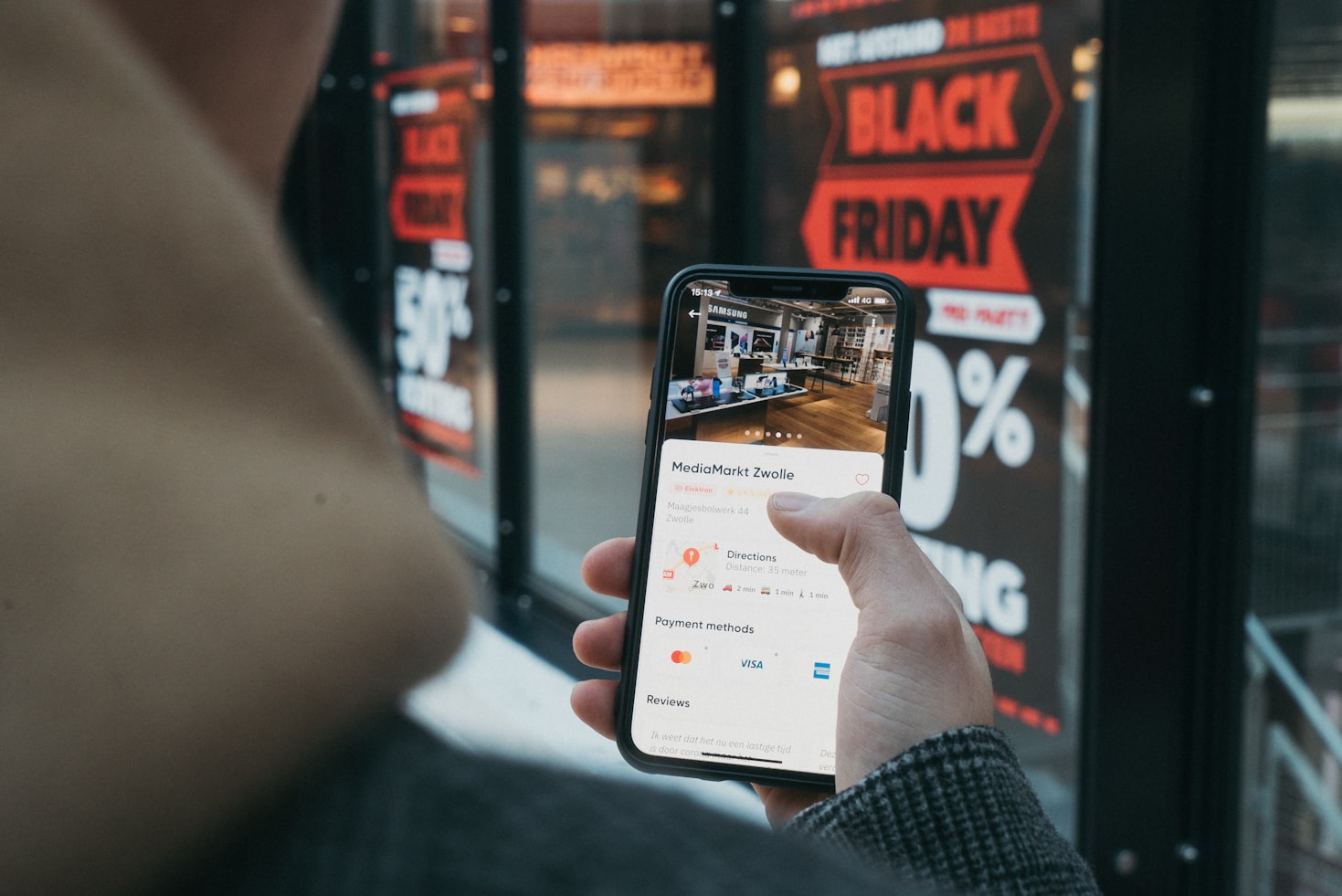Did you know that by 2025, AI in retail is expected to reach a staggering $20 billion in market value? This incredible statistic highlights the transformative power of AI, especially in the realm of online shopping. At the forefront of this revolution are AI image models, reshaping how we browse, select, and purchase products online. These models are not just a futuristic concept but a present-day reality, enhancing every aspect of the e-commerce experience.

Understanding Image AI Models
Decoding the AI Magic
AI image models are at the forefront of technological advancements, revolutionizing the way we understand and interact with visual data. These models are built upon sophisticated algorithms that possess the ability to decode and interpret images, unlocking a world of possibilities.
At their core, AI image models are designed to process and analyze pixels, the smallest units of visual information. By breaking down an image into these tiny components, these models can extract valuable insights and understand the content within the image. This process involves recognizing patterns, shapes, colors, and textures, allowing the model to comprehend what it is seeing.
AI in Action: Real-World Examples
The integration of AI image models into e-commerce platforms has revolutionized the way we shop online. These models have enabled the development of innovative features that enhance the shopping experience and provide users with personalized and efficient solutions.
One prominent example is the virtual try-on experience offered by some e-commerce platforms. Using AI image models, these platforms allow customers to virtually try on clothing, accessories, or even makeup products before making a purchase. By analyzing the user’s image or video input, the AI model can accurately map the product onto the user’s body or face, giving them a realistic preview of how it would look on them. This feature not only saves time and effort but also reduces the need for physical try-ons, making online shopping more convenient and enjoyable.
The Role of Image AI in Enhancing the Online Shopping Experience

Personalized Product Recommendations
Personalized product recommendations powered by AI image models have become a game-changer in the e-commerce industry. By analyzing a user’s browsing history, preferences, and behavior, these models can accurately predict and suggest products that align with the individual’s interests and needs. This level of personalization enhances the shopping experience by saving time and effort, as users are presented with relevant options without having to search extensively. Moreover, personalized recommendations increase the likelihood of purchases for retailers, as customers are more likely to be satisfied with their choices and make repeat purchases in the future.
The effectiveness of personalized product recommendations lies in the ability of AI image models to understand and interpret visual data. By analyzing the visual features of products that a user has shown interest in, such as color, style, or design, these models can identify patterns and similarities to suggest similar items. This not only helps users discover new products that they may have otherwise missed but also creates a sense of personalization and exclusivity, making customers feel valued and understood. As AI image models continue to improve and gather more data, personalized product recommendations will become even more accurate and tailored to individual preferences, further enhancing the shopping experience for users and driving sales for retailers.
Visual Search Capabilities
Visual search capabilities powered by AI image models have revolutionized the way users discover and shop for products online. With this technology, users can simply upload an image of a product they like, and the AI model will instantly find similar items available in the store. This eliminates the need for users to describe the product in words or browse through countless pages of search results, making the shopping experience more efficient and enjoyable.
Visual search is particularly valuable in industries such as fashion and home decor, where visual attributes play a crucial role in product selection. For example, if a user sees a dress they like on social media or in a magazine, they can easily find similar options by uploading an image of the dress. The AI model will analyze the visual features of the dress, such as color, pattern, and style, and provide a curated list of similar dresses available for purchase. This not only saves time for users but also opens up a world of possibilities by introducing them to new brands and products they may not have discovered otherwise.

Virtual Try-Ons and Augmented Reality
Virtual try-ons and augmented reality (AR) have become game-changers in the fashion and accessories industry, thanks to AI image models. These technologies allow customers to virtually try on various products, such as clothes, glasses, and makeup, using their smartphones or other devices. By leveraging AR technology, AI image models can superimpose virtual images of these products onto the user’s live video feed or uploaded photos, creating a realistic and interactive experience.
Virtual try-ons provide numerous benefits for both customers and retailers. They enhance the user experience by allowing customers to visualize how a product would look on them before making a purchase. This eliminates the uncertainty and guesswork associated with online shopping, as customers can see how the product fits their body shape, skin tone, or facial features. It also enables customers to experiment with different styles and combinations without physically trying on multiple items.
Improved Product Discovery and Navigation
Improved product discovery and navigation are significant benefits of AI image models in the retail industry. With the help of AI algorithms, products can be categorized and tagged more accurately, allowing for a more efficient and streamlined shopping experience. This is particularly beneficial for stores that offer a wide range of products, as it can be challenging for customers to navigate through numerous options.
By leveraging AI image models, retailers can automatically analyze product images and extract relevant information such as color, pattern, style, and size. This data can then be used to categorize products into specific groups or create personalized recommendations for customers. For example, a clothing retailer can use AI image models to tag products with attributes like “floral print,” “vintage style,” or “plus size,” making it easier for customers to search for specific items or browse through curated collections.

Enhanced Customer Support
Enhanced customer support is a significant advantage of AI models in the retail industry. By leveraging AI algorithms, retailers can deploy chatbots and virtual assistants that offer instant and personalized customer support. These AI-driven tools can handle a wide range of inquiries, from basic questions about store hours to more complex product-related queries. They can provide real-time assistance, ensuring that customers receive prompt responses and reducing the need for human intervention.
AI-powered chatbots and virtual assistants can also offer product recommendations based on customer preferences and previous purchase history. By analyzing vast amounts of data, these AI models can understand customer preferences and suggest relevant products, enhancing the shopping experience and increasing the likelihood of making a sale. Additionally, these tools can assist customers throughout the shopping process, helping them find the right products, providing information about availability or shipping options, and even facilitating the checkout process.
Inventory Management and Demand Prediction
AI image models play a crucial role in inventory management and demand prediction for retailers. By analyzing trends and patterns in customer behavior, these models can accurately predict demand for different products. This enables retailers to optimize their inventory levels by stocking the right amount of each item, reducing the risk of overstocking or understocking. By having the right products available at the right time, retailers can improve customer satisfaction and increase sales.
Furthermore, AI image models can help retailers identify which products are more likely to sell based on visual cues. By analyzing images and product attributes, these models can determine which items are popular among customers and which ones are not. This information allows retailers to make informed decisions about their inventory, focusing on stocking products that have a higher likelihood of selling. By reducing waste and optimizing inventory levels, retailers can improve their profitability and operational efficiency.

Accessibility Features
Incorporating accessibility features into AI image models can greatly improve the shopping experience for individuals with disabilities. For visually impaired users, these models can provide descriptive audio that describes the visual aspects of products. By using advanced image recognition technology, the AI models can analyze product images and generate detailed descriptions that are then read aloud to the user. This enables visually impaired individuals to have a better understanding of what a product looks like, allowing them to make informed purchasing decisions.
Moreover, AI image models can also assist individuals with other disabilities, such as cognitive impairments or language barriers. By analyzing product images and attributes, these models can generate text-based descriptions or translations that are easier to comprehend. This helps individuals with cognitive impairments or language barriers to navigate through product catalogs and understand the features and benefits of different items. By making shopping more accessible and inclusive, AI image models contribute to creating a more equal and diverse retail environment.
Sustainable Shopping
AI image models play a crucial role in promoting sustainable shopping practices by enabling more accurate demand prediction and personalization. By analyzing vast amounts of data, these models can identify patterns and trends in consumer behavior, allowing retailers to better understand their customers’ preferences and anticipate their needs. This helps in reducing overproduction and waste by ensuring that retailers produce only the necessary amount of products that are in high demand.
Additionally, AI image models facilitate personalized recommendations based on individual preferences and past purchase history. By suggesting products that align with a customer’s specific interests and values, these models encourage consumers to make more sustainable choices. For example, if a customer has shown a preference for eco-friendly or ethically sourced products, the AI model can identify similar items and recommend them. This not only enhances the shopping experience for the customer but also promotes the purchase of sustainable products, contributing to a more environmentally conscious society.
The Future of Online Shopping with AI
With the rapid advancements in AI technology, the future of online shopping holds immense potential for transformation. One exciting prospect is the integration of augmented reality (AR) into the online shopping experience. AI-powered AR applications can allow customers to virtually try on clothes, visualize furniture in their homes, or even test out makeup products before making a purchase. This not only enhances the convenience of online shopping but also provides a more immersive and interactive experience for customers, bridging the gap between physical and digital retail.
Another area where AI can revolutionize online shopping is in inventory management. AI algorithms can analyze vast amounts of data, including historical sales patterns, customer preferences, and external factors like weather or social media trends, to accurately predict demand and optimize inventory levels. This helps retailers avoid overstocking or understocking products, leading to improved customer satisfaction and reduced waste.
Furthermore, AI-powered chatbots and virtual assistants are becoming increasingly prevalent in online shopping platforms. These intelligent systems can provide personalized recommendations, answer customer queries, and assist with the entire shopping process. By leveraging natural language processing and machine learning capabilities, these AI assistants offer a more efficient and personalized customer service experience.
Conclusion
AI image models are not just a technological novelty; they represent a significant leap forward in the evolution of online shopping. By offering personalized recommendations, enabling visual search capabilities, and providing virtual try-on options, these models are making the online shopping experience more engaging, efficient, and tailored to individual preferences.
Retailers who embrace AI image models are not only enhancing the customer experience but also streamlining their operations, from inventory management to customer support. As these technologies continue to evolve, we can expect even more innovative applications that will further transform the e-commerce landscape.
Ready to take your product photography to the next level? Explore ProductScope’s diverse range of high-quality photography backdrops. Perfect for creating stunning, professional images that make your products stand out. Don’t let mediocre visuals hold you back. Elevate your brand today!
Sign Up for ProductScope AI Today!
FAQs
What are Image AI Models in Online Shopping?
Image AI models in online shopping are advanced algorithms that analyze and interpret visual data, enabling features like visual search, product recommendations, and virtual try-ons. These models enhance the shopping experience by allowing customers to search and interact with products in a more intuitive and visual manner.
How Do Image AI Models Improve the Online Shopping Experience?
Image AI models improve the online shopping experience by providing personalized recommendations, enabling visual search capabilities, and offering virtual try-on options. This leads to a more engaging and efficient shopping process, helping customers find what they’re looking for faster and with greater accuracy.
Can Image AI Models Help in Finding Similar Products?
Yes, image AI models can identify similar products by analyzing visual characteristics such as color, shape, and pattern. This feature is particularly useful for shoppers looking for alternatives or variations of a specific item, enhancing the product discovery process.
Are Image AI Models Reliable for Online Shopping?
Image AI models have become increasingly reliable for online shopping, thanks to advancements in machine learning and computer vision. They are trained on large datasets to accurately recognize and interpret a wide range of products, making them a dependable tool for both retailers and consumers.
How Do Image AI Models Handle Different Fashion Styles?
Image AI models handle different fashion styles by analyzing current trends, customer preferences, and historical data. They can categorize and recommend products based on style, making it easier for shoppers to find items that match their personal fashion sense.
Do Image AI Models Support Sustainable Shopping Practices?
Image AI models can support sustainable shopping practices by recommending eco-friendly products, optimizing inventory management to reduce waste, and helping consumers make more informed choices about the products they purchase.
What is the Future of Image AI Models in Online Shopping?
The future of image AI models in online shopping includes more personalized and immersive experiences, such as augmented reality (AR) try-ons, smarter recommendation engines, and integration with social media platforms for a seamless shopping journey.

